|
Lincoln's Inn Fields
London's largest public square.
(Photos/words © urban75, 13th Sept, 2007)
Said to be one of the inspirations of Central Park, New York and the largest public square in London, Lincoln's Inn Fields was laid out in part by Inigo Jones from the early 17th century.
The Lincoln's Inn Fields Theatre ran on the site from 1661 and hosted John Gay's The Beggar's Opera in January 1728, and Handel's final two operas in 1740 and 1741.
It was also the scene of a grisly exection in 1683, where the executioner, Jack Ketch, made such a cock up the public beheading of Lord William Russell, that he took four axe blows before the head was separated from the body.
After the first blow failed miserably to despatch the Lord, Russell looked up and said to him "You dog, did I give you 10 guineas to use me so inhumanely?".
Opened up to the public after its acquisition by London County Council in 1895, the park is now in the hands of the London Borough of Camden and offers tennis and netball facilities and a bandstand.
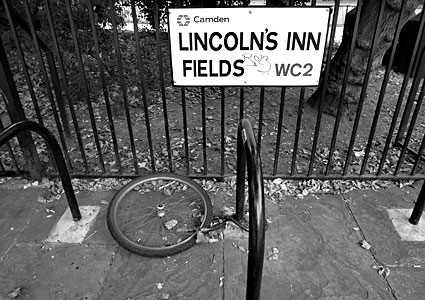
The sad remains of a stolen bicycle by the entrance to Lincoln's Inn Fields.
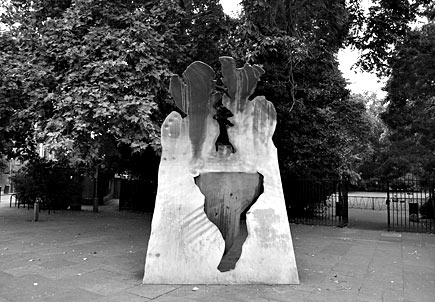
Truly hideous sculpture by the entrance to Lincoln's Inn Fields.
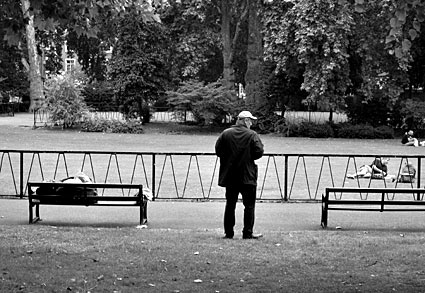
During the 1990s, Lincoln's Inn Fields became popular with a large number of homeless people who set up makeshift plastic and cardboard shelters amongst the bushes.
It was much the same story in the later part of the 17th century, where the fields became a gathering place for various rogues as well as the homeless, spawning the expression "A Lincoln's Inn mumper" for a gypsy cant, beggar or dishonest vagabond.
Many of these mumpers became "rufflers," a name given to beggars impersonating maimed soldiers, who hassled the rich folks passing through the square.
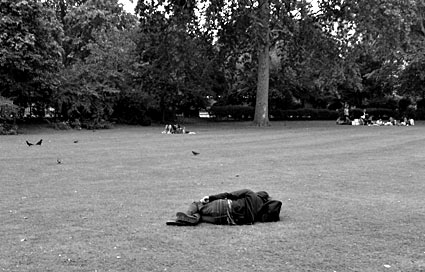
Most of the 20th/21st century homeless have now been cleared out of Lincoln's Inn Fields, although a few can still be found sleeping on the lush grass parkland or taking shade under the vast oaks.
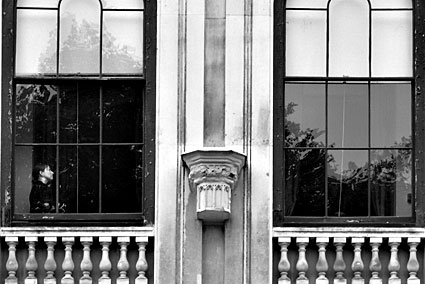
Detail from Sir John Soane Museum, Lincoln's Inn Fields.

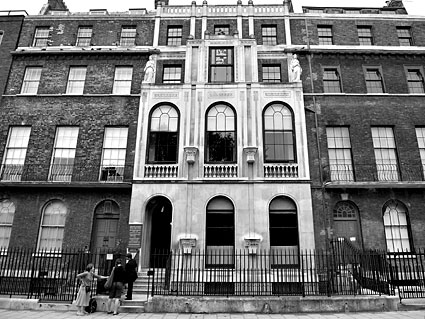
John Soane's impressive house, now a museum at 12, 13 and 14 Lincoln Inns Fields.
Despite being born to an artisan bricklayer in 1753, John Soane had risen to become one of wealthiest and most famous collectors art that Britain has ever known - a kind of John Paul Getty of his times.
Through a combination of luck and raw architectural talent, he was commissioned to design the Bank of England, at the tender age of 26.
His wealth increased rapidly after his wife's uncle died leaving them a bumper wedge o'wonga, leaving Soane free to pursue his pursue his passion for acquisition.
An appointment to Professor of Architecture at the Royal Academy in 1806 led to Soane transforming his town house into an inspirational museum for students.
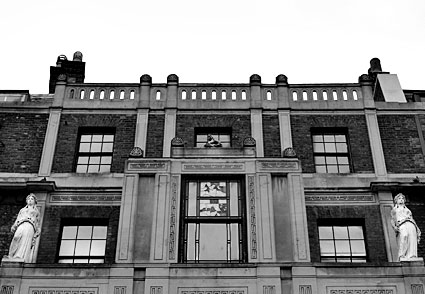
Looking up.
Inside you can find a fascinating - and slightly chaotic - mix of mock-Gothic, ancient Roman, Greek and Phonecian stonework, various books, medals, amulets and miniatures, all seemingly scattered randomly around the house.
 More info [BBC] More info [BBC]
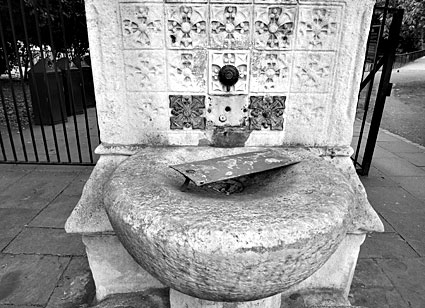
Broken fountain by the entrance to the park, with what looks like a bit of a street lamp.
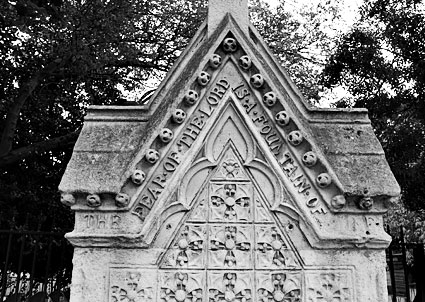
"The fear of the Lord is a fountain of...", err, something or another.

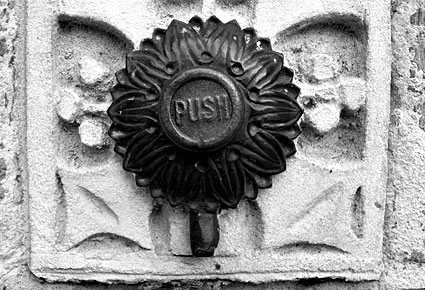
The button may look very attractive, but its long since stopped working, like many fountains in London.
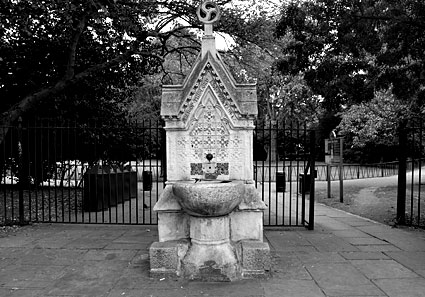
The fountain in all its faded glory.
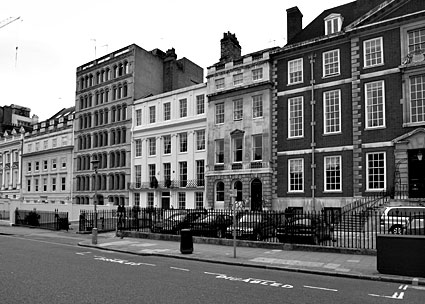
A rich range of period styles facing onto Lincoln's Inn Fields.
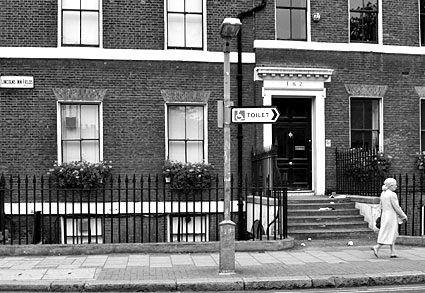
Street sign and passing woman.
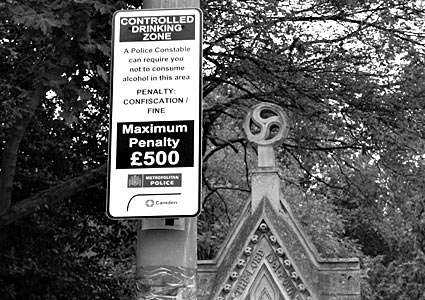
No drinkers here please.

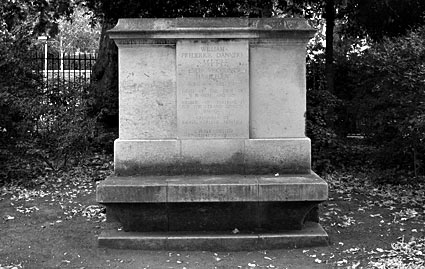
Rather austere monument in Lincoln's Inn Fields to William Frederick Danvers Smith, head of the famous WH Smith & Son booksellers and son of its founder.
There was once a bust standing on top of the plinth, but that was stolen many years ago.

Bandstand, Lincoln's Inn Fields.
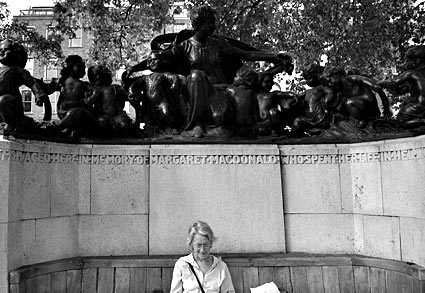
A rather flamboyant seat in memory of Margaret Macdonald, wife of Ramsay Macdonald and a staunch socialist.
Designed by the sculptor Richard Goulden in 1914, the memorial is a bronze group mounted on a marble base showing the subject flanked by numerous infants.
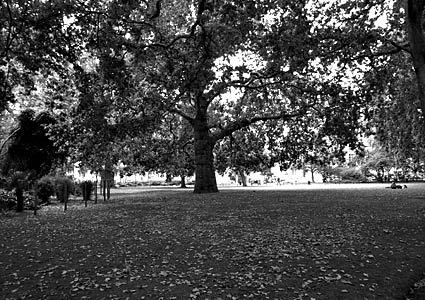
Park view.

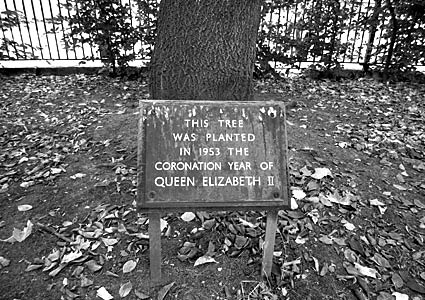
My hasn't it grown?!
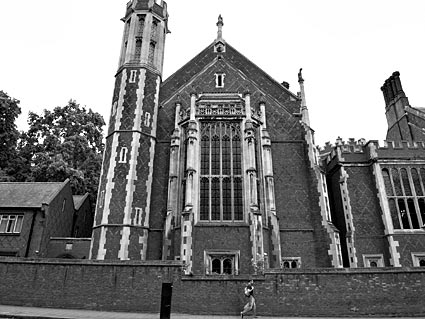
The impressive sight of the Honourable Society of Lincoln's Inn, one of four Inns of Court in London to which barristers of England and Wales belong and where they are called to the Bar.
Thought to be the oldest of the four Inns of Court, Lincoln's Inn has formal records stretching back continuously to 1422, although its actual origins are even older.
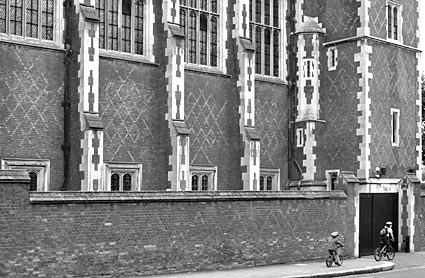
The current buildings Great Hall was designed by the father and son architects, Philip and Philip Charles Hardwick in 1843, with contributions by Giles Gilbert Scott.
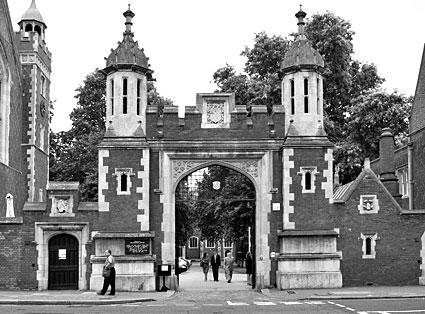
Dramatic entrance to Lincoln's Inn.
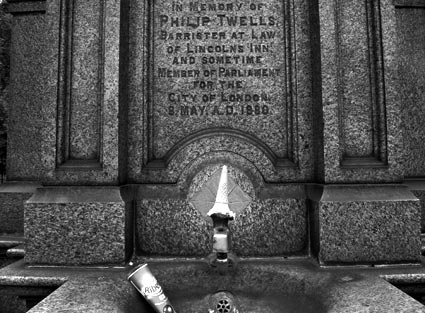
Ice cream cone in Philip Twells memorial fountain.
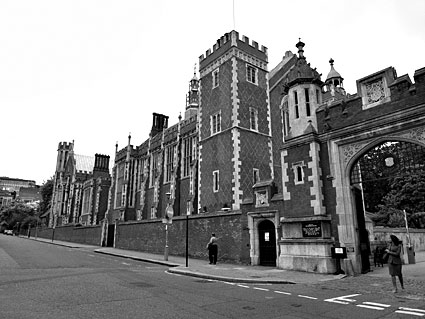
Another look at the mock-Tudor splendour of Lincoln's Inn hall.
|

